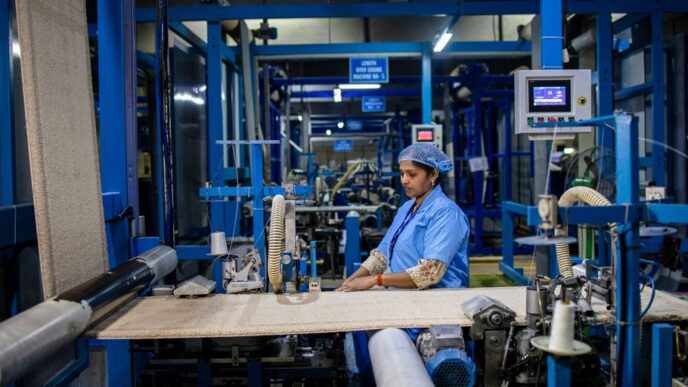Semiconductors are something of an uncelebrated hero of the technological world. It’s not an exaggeration to say that modern technology really couldn’t function without semiconductors. But they don’t get talked about nearly as much as they should. However, the lack of discussion is understandable. The role of semiconductors in new technologies is a little convoluted. But if you understand a few important points you’ll see exactly how semiconductors facilitate new technologies.
The first thing to understand about semiconductors is exactly what the term means. A semiconductor refers to anything that can conduct electricity but in a diminished state – they’re partially conductive. This makes semiconductors distinct from both conductive elements like copper and nonconductive elements like rubber. You can understand the importance more easily by thinking of wires. Wires work because the conductive copper is held within the nonconductive rubber. In a sense wires anticipated the later discovery of semiconductors.
And, indeed, semiconductors can function in a somewhat similar way to wires. Semiconductors can transmit electrical energy from one point within them to another. In fact, this is a natural property of a few substances. Silicone is perhaps one of the most well-known examples of a natural semiconductor. This might sound like semiconductors are just natural wires. If that were the case then they’d certainly be valuable. But they wouldn’t really be the true technological dynamo that we now know them to be. What makes semiconductors important is the semiconductor manufacturing industry that has grown up around them.
The semiconductor manufacturing industry has found a variety of ways to manipulate natural semiconductors on a foundational level. The exact nature of this process differs on a case-by-case basis. But one of the most common is to insert atomic impurities into the semiconductor. But this doesn’t mean simply contaminating semiconductors. The term impurity doesn’t do justice to the procedure – known as doping.
Remember that semiconductors are, by their nature, able to both conduct and repel electricity. Again, this makes them similar in some ways to naturally occurring wires. But you could also think of them as natural pipes that are able to shuffle electricity around. The doping process and similar manipulations allow for these “pipes” to essentially be altered. And this is where the true power really comes into play. Because semiconductors aren’t really forced into a singular configuration as far as their conductivity or lack of the same. They can be manipulated into what amounts to electrical junctures. And junctures can even be manipulated into enhancing the charge, this is essentially a transistor.
Now, modern technology and enhanced semiconductor manufacturing have also managed to shrink the size of transistors. These can in turn be embedded into other semiconductors to form an integrated circuit. A circuit is itself a closed loop within any system. But in this context, it refers to a closed electrical system. And, in the modern definition, it usually implies the use of progressively smaller and smaller semiconductors. All of which have led to significant technological improvements.













